INTRODUCTION
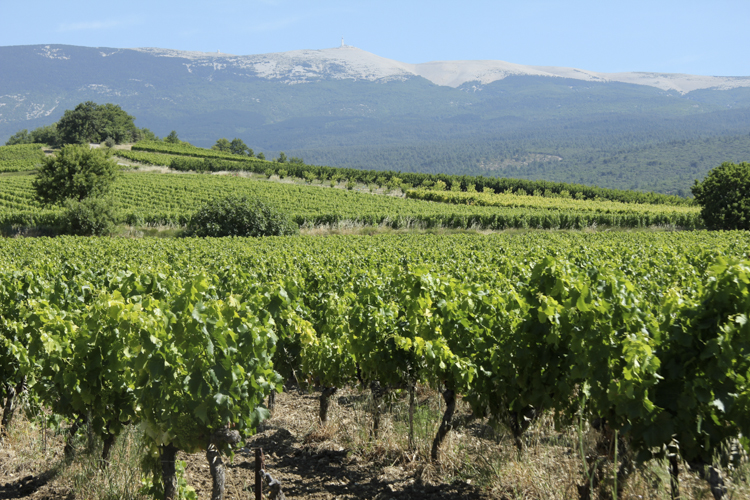
The towering Mont Ventoux, known as the mythical Géant de Provence, is often whipped by the gusting Mistral, but today a new wind is blowing through the whole Ventoux wine region. This is one of the more dynamic, under-the-radar Southern Rhône appellations, long dominated by village Caves Coopératives, buying up smallholder harvests and producing cheap and cheerful wines. Now the sleeping giant is waking up, with a new generation of independent vignerons alongside more future-thinking Coopératives, crafting wines that are making the world take notice; intense fruitiness and bursting with freshness, high acidity, increasingly sustainable, organic, biodynamic.
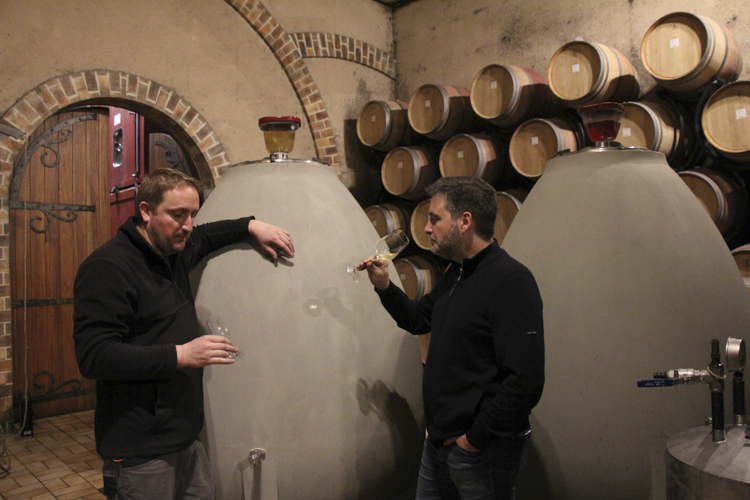
And there is enormous potential for experimental blending and ageing, as one of the quirky rules of the appellation is that all wines must an ‘assemblage’, a mix of grapes. So expect to see the varied influences of Grenache, Syrah, Mourvèdre, Carignan and Cinsault in the reds, Clairette, Bourboulenc, Roussanne and Grenache Blanc for the whites. Winemakers offer far more than cellar tastings and tours, from hosting their own b&b, renting electric bikes to explore the vignoble, while foodies can enjoy creative wine pairing in gourmet restaurants or just a delicious chilled Ventoux Rosé accompanying a vineyard picnic. Visitors to estates are always welcome, and after checking the AOC Ventoux website, here are ten top address to tracking down.
TOP TEN WINEMAKERS TO DISCOVER
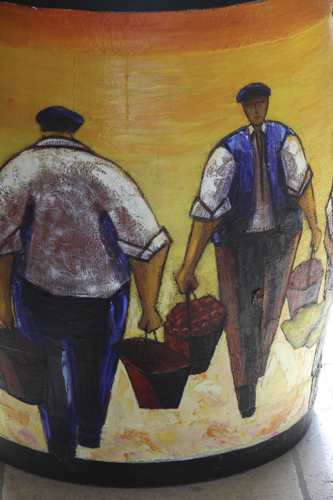
Jean-Pierre Valade may be born around here but he is not a typical Ventoux vigneron. The locals affectionately refer to him as Monsieur Champenoise, as he is an internationally-acclaimed oenologue specialised in champagne and other bubbly. “I continue to hold sparkling wine consultancies for vineyards around the world,” he explains, “ but I decided in my mid 40’s that it was time to make my own wine. The Ventoux ticked all the boxes, particularly the expectation that this will be one of the wines of the future. I was looking above all for ‘fraîcheur’, freshness, fruitiness and acidity, and these are the Ventoux signatures.” Croix des Pins was already one of the pioneer organic vineyards, “but it was in a pretty bad state when we bought in back in 2009,” he recalls, “so 80% has been replanted. The 16th century château was virtually a ruin, and it took 3 years to renovate, but this is a perfect region for wine tourism, so we have created a purpose-built cellar, tasting room, guest rooms and a restaurant.” Jean-Pierre commissioned a distinctive painting to demystify wine tasting, claiming that “people often find tasting too intimidating, feeling they should say the same as an expert using terms like ‘cherry’ or ‘fig’.
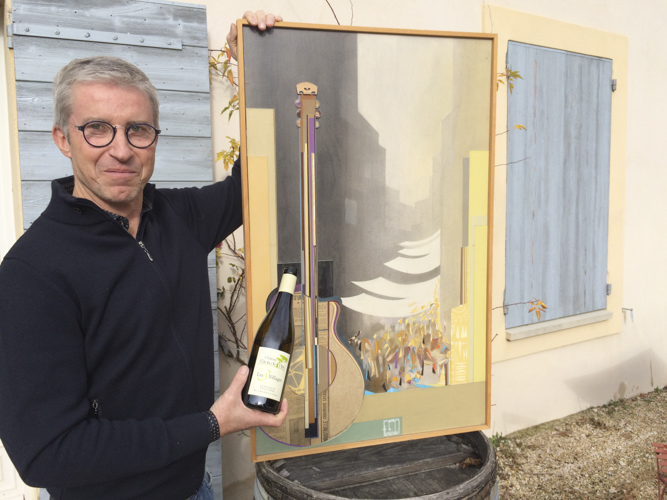
I advise following your own personal emotions, concepts like ‘hope’ ‘energetic’ or ‘powerful’.” Apart from an excellent selection of Ventoux white and red cuvées, mostly aged in raw concrete vats, he could not resist making a natural sparkling wine, La Tête à l’Envers.”
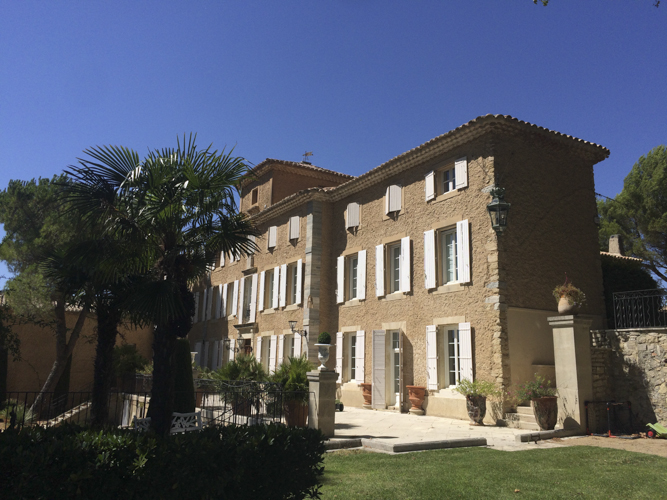
Driving up to through the ornate gardens and fountains of this grand 18th century château takes the breath away, while wine enthusiasts will be equally impressed by the modern tasting room and state-of-the-art cellar filled with ovoid cement vats, raw concrete tanks and 600 litre wooden barrels stacked up to the ceiling. Two dynamic third-generation brothers, Frédéric and Alexandre Chaudière, run what is the largest independent Ventoux vineyard; 95 hectares, all certified organic. No mean achievement. Visitors can enjoy tastings and cellar tours, picnics in the château’s gardens, a summer food market of local producers, concerts, walks or cycling through the vineyards, the chance to join in at harvest or learn how to blend wine.
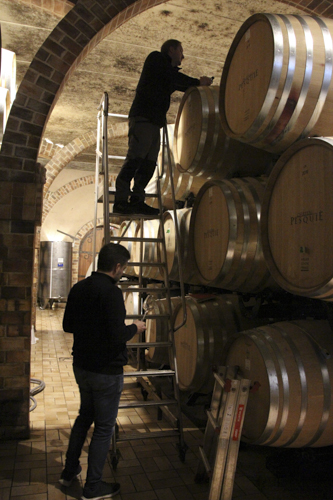
As Alexandre dips a delicate glass pipette into a barrel to taste the latest blend of Roussanne, Clairette, Viognier and Grenache Blanc, Frédéric recalls how, “our first commercial bottle of wine was just 30 years ago, back when most vignerons sold their grapes to the local Coopérative. Today, we are now 130-150 independent vignerons, and I sense an increasing pride among us to be Ventoux flag carriers.” His ambition is to establish the Ventoux as the top terroir in the South Rhône. “It may take a while, but the potential is here; rich soils, varied elevations and expositions, expressive grapes, and the influence of the Mont Ventoux itself, with its wild winds, hot days and cool nights”
Sébastien Vincent is a very determined vigneron; organic, biodynamic, a trailblazer for affordable, quality natural wines.
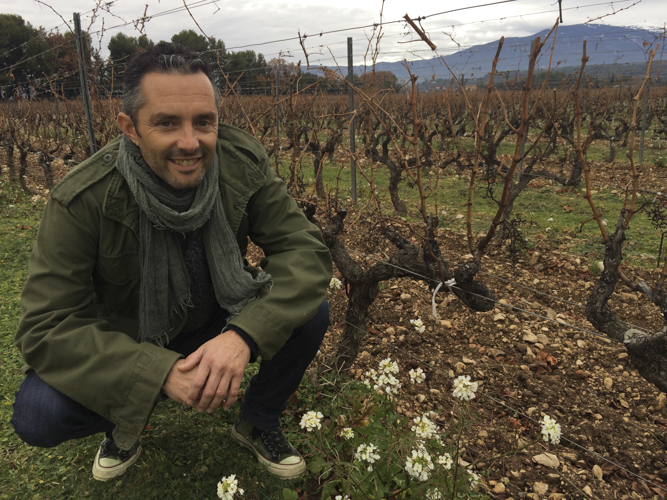
Walking through the vines that encircle his cellar, he looks up at the looming mass of the Mont Ventoux, declaring, “what influences our wines are the incredible changes of temperature in a single day, and that is due quite simply to Le Géant.” With no background, he decided to become a winemaker, studied oenology and bought the domaine at the tender age of 22, albeit with family support. His wines are innovative, almost explosive, and back in the tasting room, sipping his 2015 Persia Blanc, an elegant blend of Roussanne and Clairette, Sébastien points at three jars filled with different soil, labelled red, white, rosé.
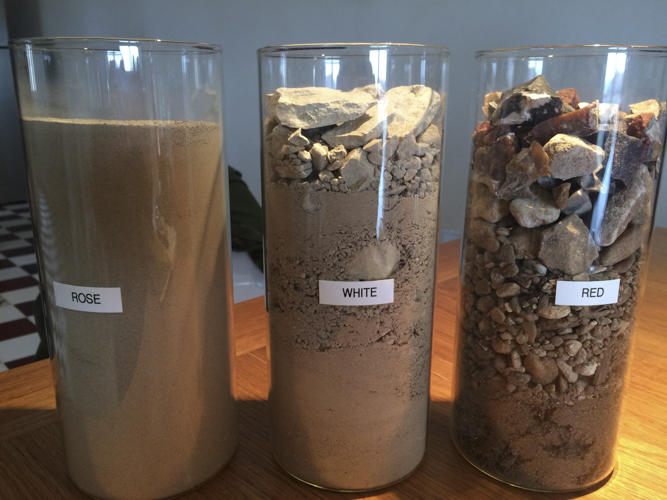
“I grow my reds – Grenache, Syrah, Mourverdre, Cinsault – on a vineyard of stony silex ground, while a second separate parcel is sandy soil for rose grapes and a third parcel of chalky limestone for whites. Each variety is vinified separately and the fun starts when I begin to blend.” His real passion emerges when the conversation turns to his natural wines, saying, ““contrary to what many people think, you actually have to work much harder to make a good Vin Nature – the grape must be healthy, the cellar must be spotlessly clean.
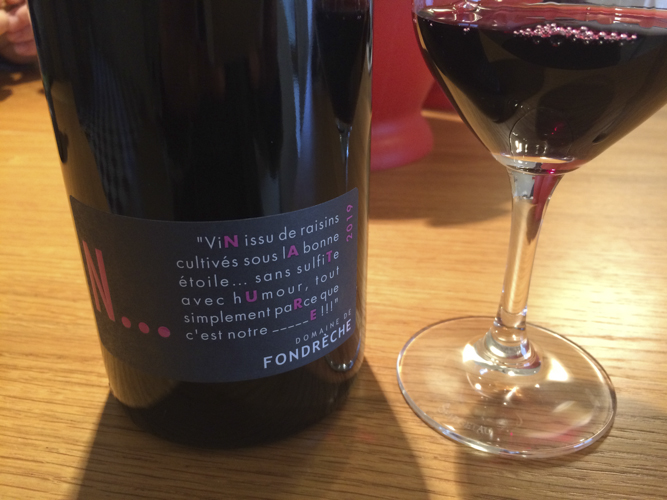
But the results are outstanding. Taste my N cuvée and I can tell you it is impossible to have the same intensity of fruit if I had have added sulphur. It is as simple as that.”
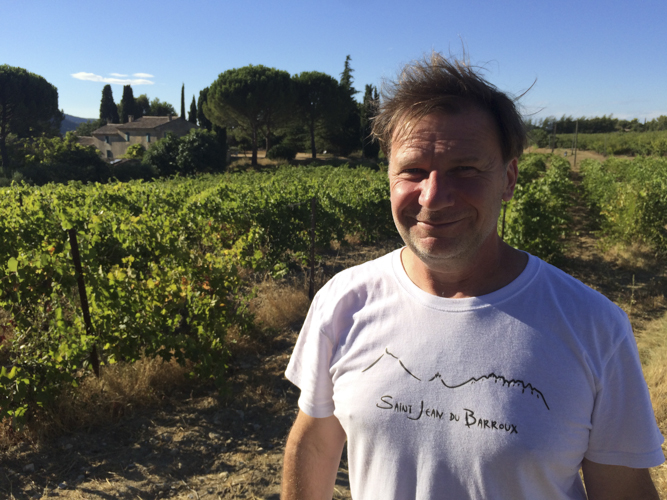
You just need to look at the distinctive logo of Philippe Gimel’s domaine to grasp the underlying philosophy of this very determined winemaker. It shows a graphic, jagged mountain range that represents the two iconic peaks of the region – Mont Ventoux and La Dentelle de Montmirail. Philippe is convinced that geology is the secret behind a great vineyard, and he was on a quest for many years to find the perfect unknown, affordable terroir that he believed could produce memorable wines. “The Ventoux was quite simply the perfect place to make my style of Grenache and Syrah,”he reminisces. It is almost impossible to get this impish vigneron to either sit still or stop talking. His passion and enthusiasm are contagious, be it tasting the exceptional range of wines, taking a cellar tour, a jumble of raw cement and steel vats, old wooden casks and an old Noblot cement cube, or wandering through the vineyard, where he sifts the red sandy soil through his fingers, pointing out fragrant herbs growing wild alongside the vines.
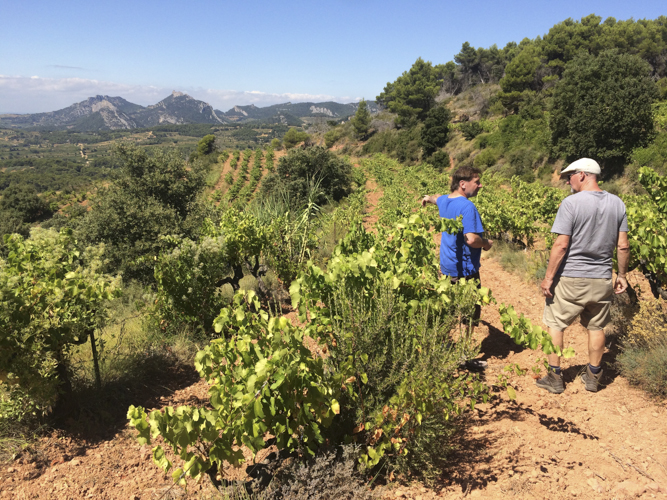
Although he is certified organic, Philippe says with a smile that, “when you buy a vineyard in the Ventoux you buy into the region’s historic polyculture, getting woods with truffles and fields of cultivated fruit trees. So the natural biodiversity is already spectacular.
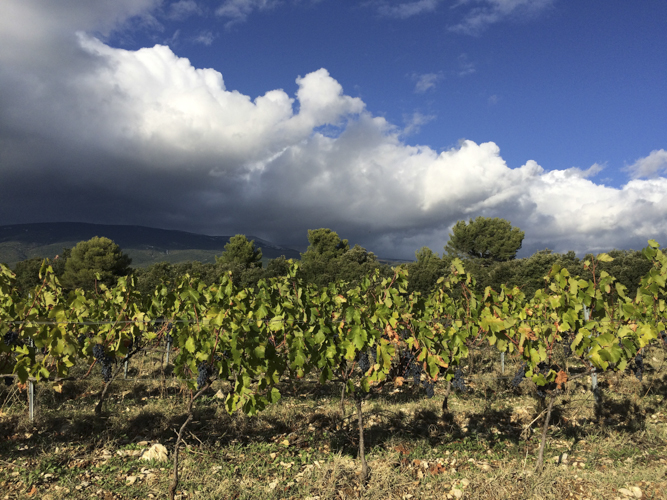
The concept of the Cave Coopérative is deeply imbedded in French rural life, providing a vital source of revenue for smallholder farmer-vignerons. The Ventoux region is particularly marked by its biodiversity and polyculture, where farmers cultivate olive oil, cereals, cherry trees, almonds and apples, along with small parcels of vines. Most lack the finance to invest in a wine cellar, preferring to sell harvested grapes direct to the Coopérative. The Cave tends to dominate the entrance to its local village, and VMV, as it is known, is no exception outside Bédoin, the bustling burg at the foot of Mont Ventoux, starting point of a mythical endurance test of the Tour de France cycle race.
Be under no illusion, as this is industrial-scale wine production, buying grapes from 109 Coopérateurs, official members of the Cave, covering a staggering 1,000 hectares. But VMV has moved with the times, offering not just popular Bag-in-Box wines for summer tourists, but a premium range whose quality surprises. Before the arrival of the first independent winemakers here in the 1970’s, all winemakers sold their grapes to the Coopérative. Even today, the region’s 16 remaining Caves still account for 70% of Ventoux production.
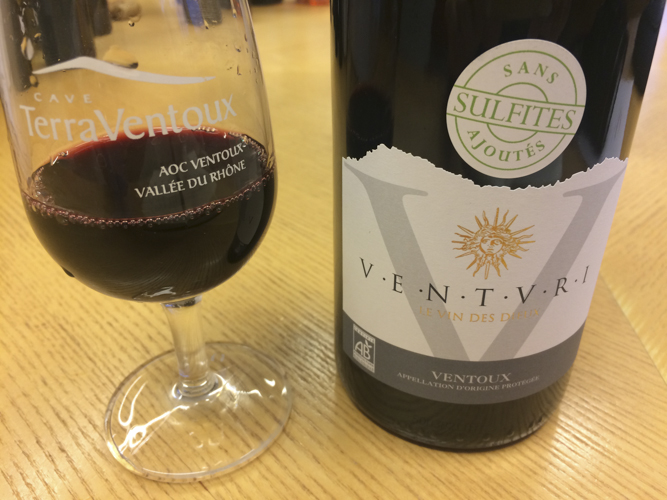
One of the smaller Coopératives, TerraVentoux, is making a name for itself with an innovative selection of organic, biodynamic, vegan and even natural wines. Unheard of for the usually conservative Cave Coopérative.
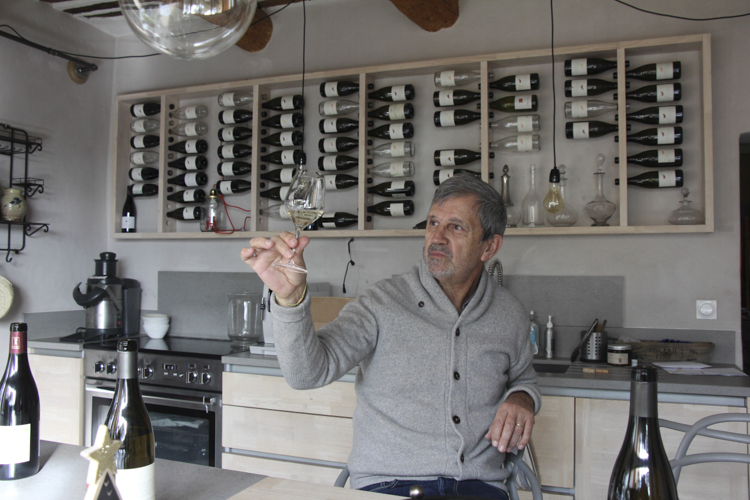
The discrete Domaine Dambrun is hidden away down a maze of narrow country lanes. But wine lovers that track down this high quality, boutique estate will get a surprise when they discover the vigneron is one of France’s most famed sports commentators. Patrick Chêne is well-known to Tour de France cycling fans, having covered 20 editions. But he has reinvented himself as a winemaker, and moreover one who is hands on. Talking to Patrick you would imagine he has been making wine all his life, and anyone who listened to his sports commentary will recognise his enthusiasm and authority, but also his humility. ‘We bought this lovely Provençal house in 2014,” he relates, “and for the first vintage, I made the wine in our small garage. No joke. Since then I can proudly say we have created the vineyard, and built a cellar. I have always been totally committed to the environment and we are certified organic, but now I am converting to biodynamic. My wines are made to age. I keep them for 2 years before commercialising and I want vintages that can age for 15- 20 years. Saying that, I am also looking for ‘buvabilité’, drinkability; elegant wines that people will enjoy tasting, want a second glass, and then to open a second bottle.
To taste the wines of Grandes Serres you have to cross into the neighbouring Gigondas Appellation where Samuel Montgermont has created a cellar he likens to, “an Experimental Centre, my craft winery where a group of us, more impassioned wine enthusiasts than technical oenologues, vinify grapes, age and blend, forever trying out new things; natural wines, a cuvee of bubbly Clairette, ageing in terracotta amphorae, assembling different terroirs.”

Samuel is not a typical vigneron, as this dynamic young lawyer turned winemaker has interests throughout the Southern Rhone. He is what the French call a ‘negociant de vin’, a term he argues is outdated and misunderstood, “I prefer to think of myself as a ‘vinificateur’, a wine maker, and Grandes Serres is my ‘Maison’, that includes wines from my own vineyards, grapes that I have bought, then vinified and aged, as well as ‘vin en vrac’, bulk wine, that I blend and bottle myself.”

From his range of Ventoux wines, he is particularly proud of the Grand Puy selection, made from a single vineyard owned by the Constantin family. “They came to me when their Cave Coopérative closed down,” recalls Samuel, ‘ and like many young vignerons they cannot yet afford their own cellar. So we are in partnership; they see how I make and blend the wine once it is harvested, I follow the work they do in the vines, converting to certified organic.”
Just finding Chêne Bleu is an adventure, climbing past the medieval village of Crestet, disappearing on rough trails into deep, shadowy forests, past herds of grazing sheep and grizzled locals hunting for rare truffles. Then suddenly a stunning vista reveals a perfectly-cultivated vineyard with a splendid château.
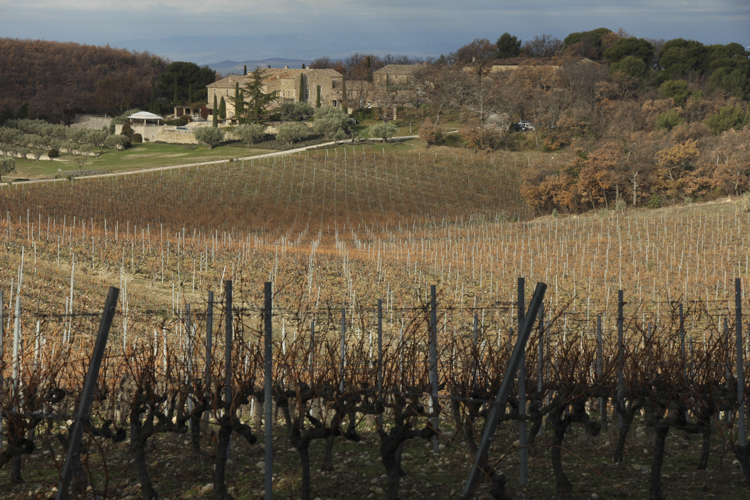
French financier, Xavier Rollet, bought the property back in 1993, with a particular philosophy of ageing and pricing that makes his Ventoux very seductive for international wine investors, a highly-priced Super Rhône to rival Super Tuscans, with the top-level Abelard, an intense, concentrated Grenache Syrah blend, aged for 8 years before going on sale.
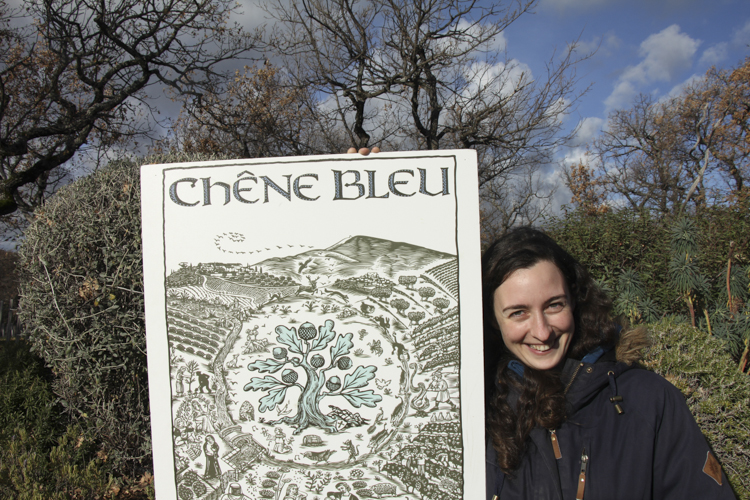
Today Chêne Bleu is still very much a family affair personified by his daughter Danielle, enthusing how, “I fell head over heels in love with this unique place and the wine, and had to come and live here. The biodiversity is just off the clouds, and climate change means our grapes are ripening earlier, the alcohol level is higher, but still with an important backbone of acidity that ensures the signature freshness of Ventoux wines. This is a fascinating time to visit the region as there is a new era of independent vignerons creating quality, sustainable wines. Today, variety is the strength of the Ventoux, a patchwork of different winemakers, different altitudes, different terroirs.”
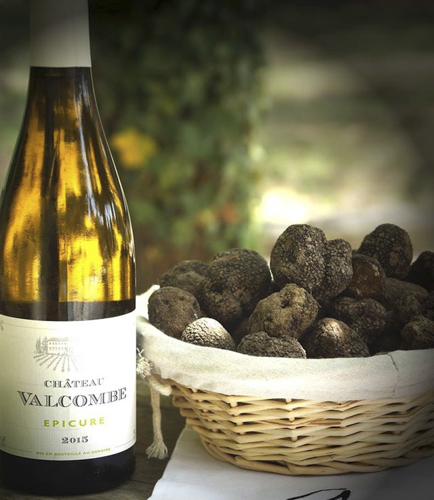
Wine tourism in the Ventoux can have surprising results. Just ask Luc Guénard, who received a surprise tasting visit a few years ago by celebrity actress Keira Knightley and her musician husband, James Righton. They had a property just nearby and Luc ended up renting 3 hectares of her vines and making Cinq Puits, a special 95% Grenache cuvée together with them.

“Although Keira works for Chanel and probably wears stilettos, I bought her a pair of vineyard safety boots for her birthday,” recounts Luc smiling, “and they really help during the harvest, even the nitty gritty work of cleaning inside the wine tanks.” Luc got to know the Ventoux when working as an aerospace engineer in Toulouse. “ I fell in love with this region, and when I decided to make my own wine, I found out about Valcombe when playing cards in the local bistrot. The old guys told me that the land was for sale, and they said this was the first Ventoux domaine to sell a bottle for more than 100 francs. So I reckoned it had to have potential!” He has turned the vineyard organic, harvests 100% by hand, and believes, “we make ‘confidential wines’, maybe priced higher than average but with high level distribution, like the mythical food hall of Au Bon Marché. That is how we can raise the profile of Ventoux around the world”
The Domaine des Anges was the first independent winery in the Ventoux. This idyllic vineyard covering the hillside beneath the chapel of Notre-Dame des Anges, holds other surprises, as the pioneering owner was an Englishman, who then sold to an Irishman, Gay McGuinness, who today leaves the running of the estate to local winemaker, Florent Chave. This is typical of the cosmopolitan influences in the Ventoux, where you may well come upon a Scottish, Norwegian or German vigneron. Florent is clearly influenced by the heritage of the region, recounting that, “there was once a Roman fort here, meaning wine was already produced 2,000 years ago.
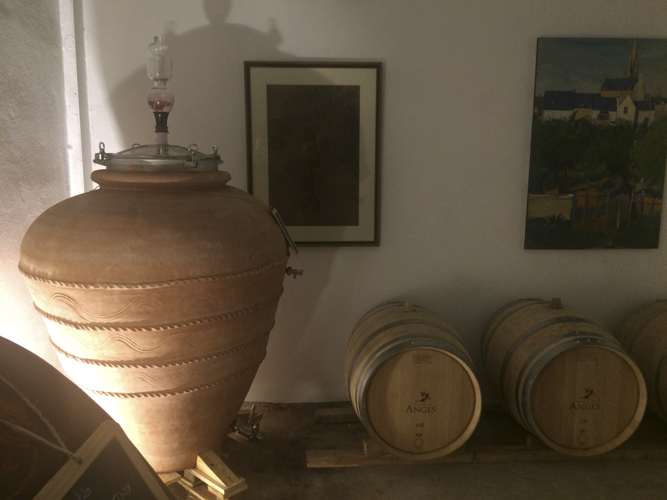
So for me, it means a lot to be able to age our prestigious Grenache Cuvée Séraphin in terracotta amphorae, the traditional method back then.” Scot James King is a man who also takes his Grenache seriously.
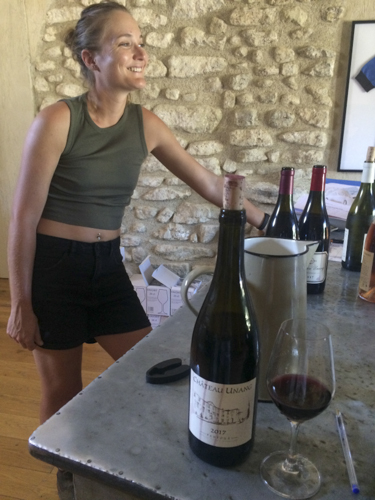
Owner of the wonderfully romantic Château Unang, he claims “the Ventoux was perfect for what I wanted to achieve for both my Grenache reds and whites; acidity, freshness, altitude and exposure.”
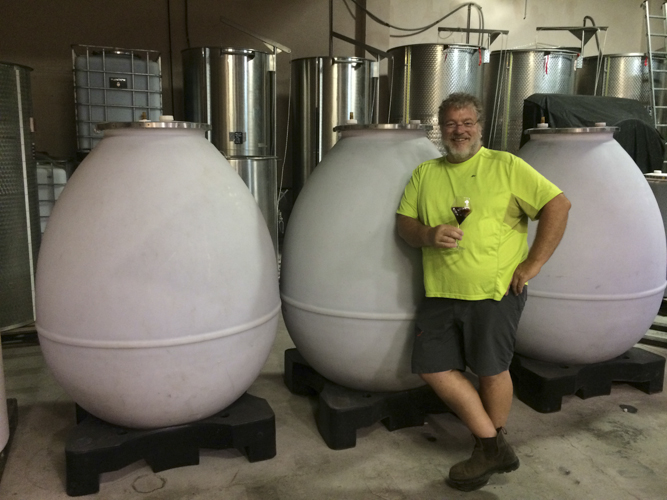
A few miles down the road stands Vintur a very modern winery, overseen by jovial cellar master, James Wood, a nomadic English winemaker with experience in South Africa and New Zealand. Expect to taste surprising, experimental whites and reds, as well as a zero-dosage brut bubbly, using the local Boubelenc grape.
where to stay
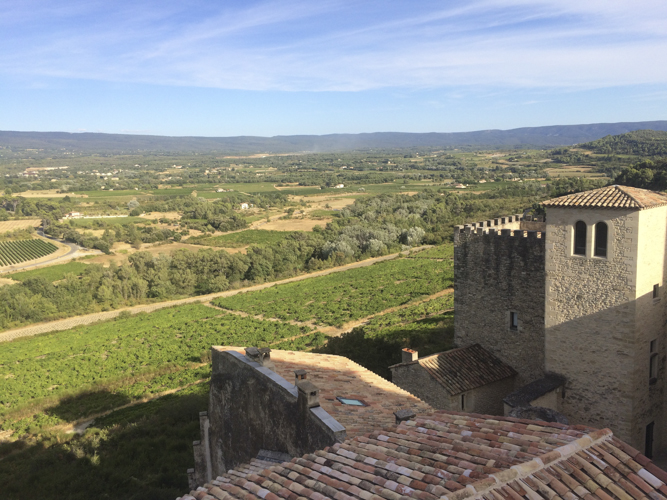
Luxury hideaway in stunning hilltop 17th century castle. Wellness spa, gourmet restaurant and stunning views of the Ventoux.
Genial hosts Denis and Blondine run a comfortable chambres d’hôte and foodie restaurant in Bédoin village at the foot of Mont Ventoux.
Innovative glamping in cosy wooden cabins, hidden away in the wild Provençal ‘garrigue’ scrubland..
where to eat
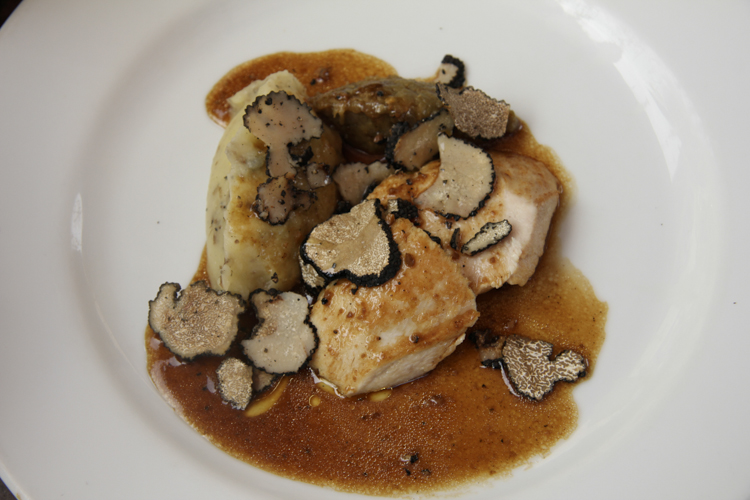
For the perfect pairing of local cuisine and wine, Serge Ghoukassian proposes tempting truffle dishes with over 50 Ventoux wines.
Seasonal, locavore cuisine served in romantic 17th century farmhouse, with guest rooms, cooking courses and tastings of their own wine.
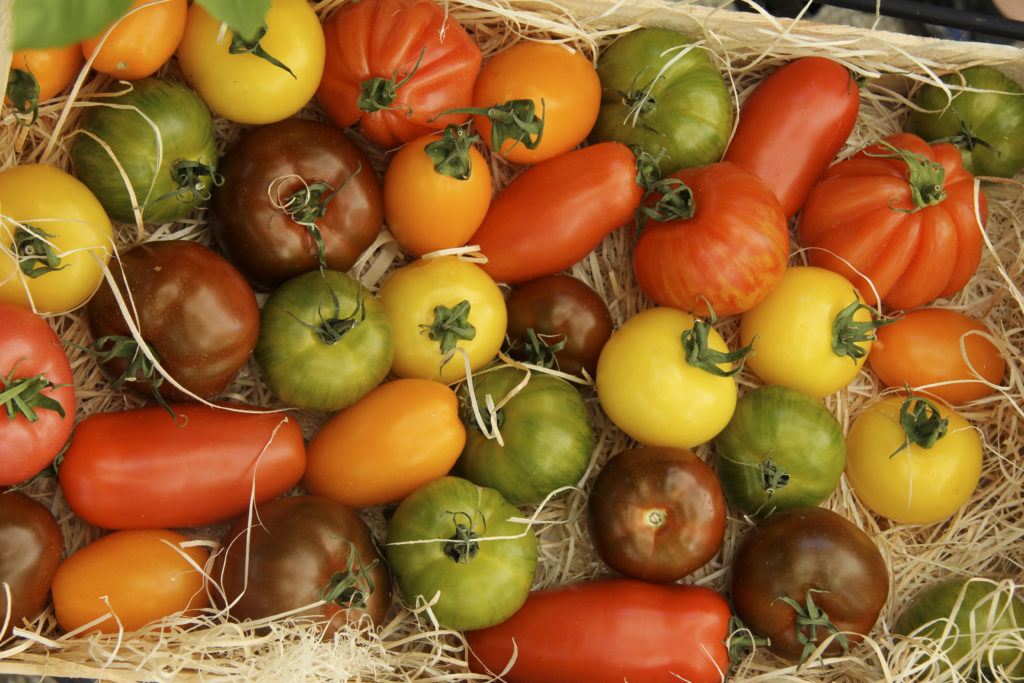
Choose between this Château hotel’s bistronomique restaurant and the fining dining salon that has just been awarded a prestigious Michelin star.
what to do
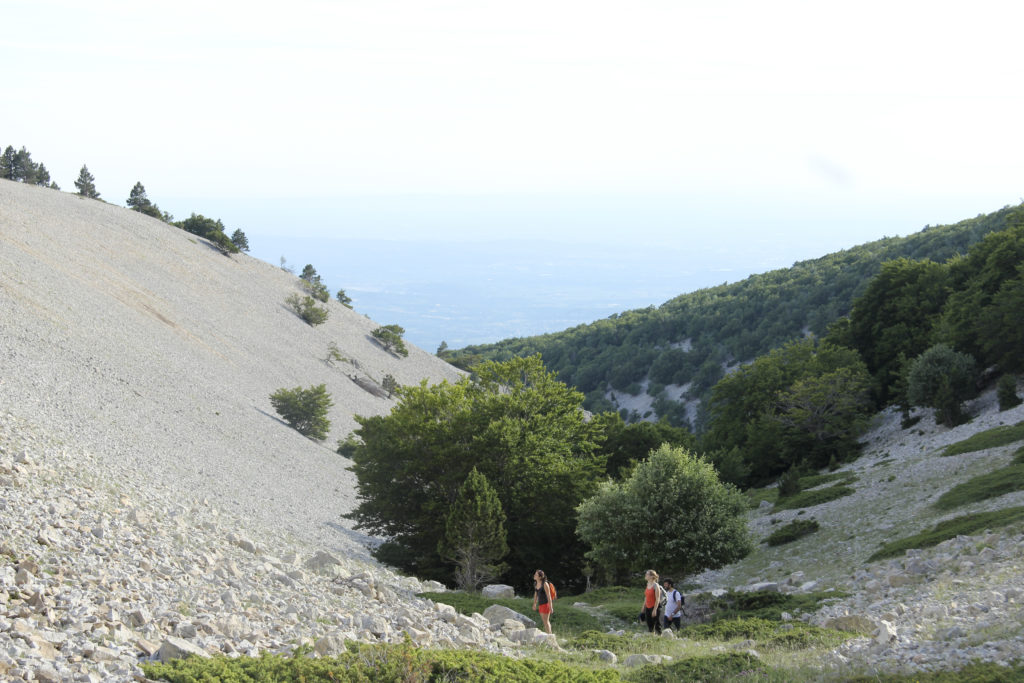
This unique 2,000 metre mountain must be climbed! Cyclists can choose between pedal power and electric, while trekking up on foot is unforgettable.
In the summer, the Ventoux turns purple with fragrant lavender. See a traditional alambic distill freshly-harvested lavender for essential oils, aromatic soap and cosmetics.
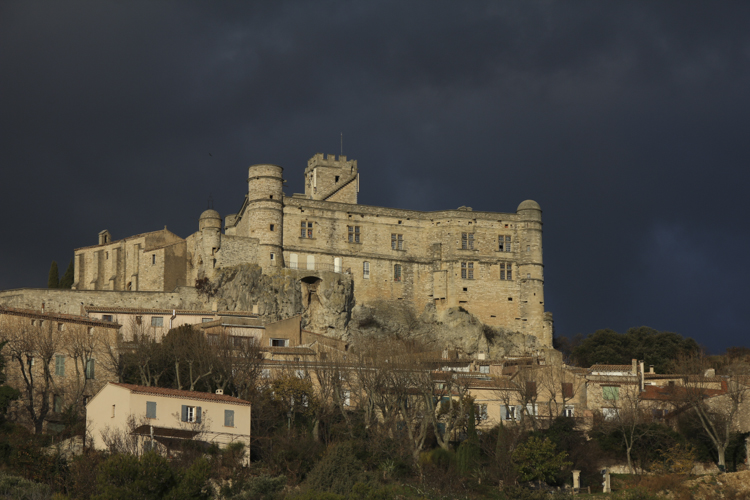
Majestic castle dating back to 12th century. Slowly under renovation with views are spectacular.
